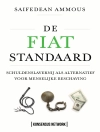Catastrophic climate change overshadows the present and the future. Wrenching economic transformations have devastated workers and hollowed out communities. However, those fighting for jobs and those fighting for the planet have often been at odds. Does the world face two separate crises, environmental and economic? The promise of the Green New Deal is to tackle the threat of climate change through the empowerment of working people and the strengthening of democracy. In this view, the crisis of nature and the crisis of work must be addressed together—or they will not be addressed at all.
This book brings together leading experts to explore the possibilities of the Green New Deal, emphasizing the future of work. Together, they examine transformations that are already underway and put forth bold new proposals that can provide jobs while reducing carbon consumption—building a world that is sustainable both economically and ecologically. Contributors also debate urgent questions: What is the value of a federal jobs program, or even a jobs guarantee? How do we alleviate the miseries and precarity of work? In key economic sectors, including energy, transportation, housing, agriculture, and care work, what kind of work is needed today? How does the New Deal provide guidance in addressing these questions, and how can a Green New Deal revive democracy? Above all, this book shows, the Green New Deal offers hope for a better tomorrow—but only if it accounts for work’s past transformations and shapes its future.
Inhoudsopgave
Introduction, by Craig Calhoun and Benjamin Y. Fong
Part I: The New Deal and the Green New Deal
1. From the New Deal to the Green New Deal, by Richard A. Walker
2. From Romance to Utilitarianism: Lessons on Work and Nature from the New Deal, by Hillary Angelo
3. A Green New Deal for Agriculture, by Raj Patel and Jim Goodman
Part II: What Is the Crisis of Work?
4. A Green New Deal for Care: Revaluing the Work of Social and Ecological Reproduction, by Alyssa Battistoni
5. Another World (of Work) Is Possible, by Stephanie Luce
6. Time for Rabble-Rousing: Lessons from the Historic Fight for Reduced Working Hours, by Wilson Sherwin
Part III: Delivering Jobs and Empowering Workers
7. Jobs for All: A Job Guarantee Puts Workers in the Driver’s Seat, by Dustin Guastella
8. Unions and the Green New Deal, by Mindy Isser
9. “Fancy Funeral” or Radical Rebirth? Just Transition and the Future of Work(ers) in the United States, by Todd E. Vachon
10. Overcoming the Tragedy of Growth Machines, by Harvey Molotch
Part IV: Transforming Infrastructure
11. A Green New Deal for Housing, by Daniel Aldana Cohen
12. Low-Carbon, High-Speed: How a Green New Deal Can Transform the Transportation Sector, by J. Mijin Cha and Lara Skinner
13. Redesigning Political Economy: The Promise and Peril of a Green New Deal for Energy, by Clark A. Miller
Part V: The Work of Building a Better Society
14. Community Control and the Climate Crisis: Power, Governance, and Racial Capitalism, by Olúfẹ́mi O. Táíwò
15. Rethinking the Green New Deal: From War to Work, by Harry C. Boyte and Trygve Throntveit
16. How to Create Good Jobs, a Sustainable Environment, and a Durable and Successful Left Political Alliance Through a Green New Deal, by Richard Lachmann
Acknowledgments
Index
Over de auteur
Craig Calhoun is University Professor of Social Sciences at Arizona State University. He was previously director of the London School of Economics and Political Science and president of the Social Science Research Council. His most recent book is Degenerations of Democracy (2022), with Dilip Parameshwar Gaonkar and Charles Taylor.Benjamin Y. Fong is associate director at the Center for Work and Democracy and Honors Faculty Fellow at Barrett, the Honors College at Arizona State University. He is the author of Death and Mastery: Psychoanalytic Drive Theory and the Subject of Late Capitalism (Columbia, 2016). His writing has also appeared in Jacobin, Catalyst, the New York Times, and Damage Magazine.












